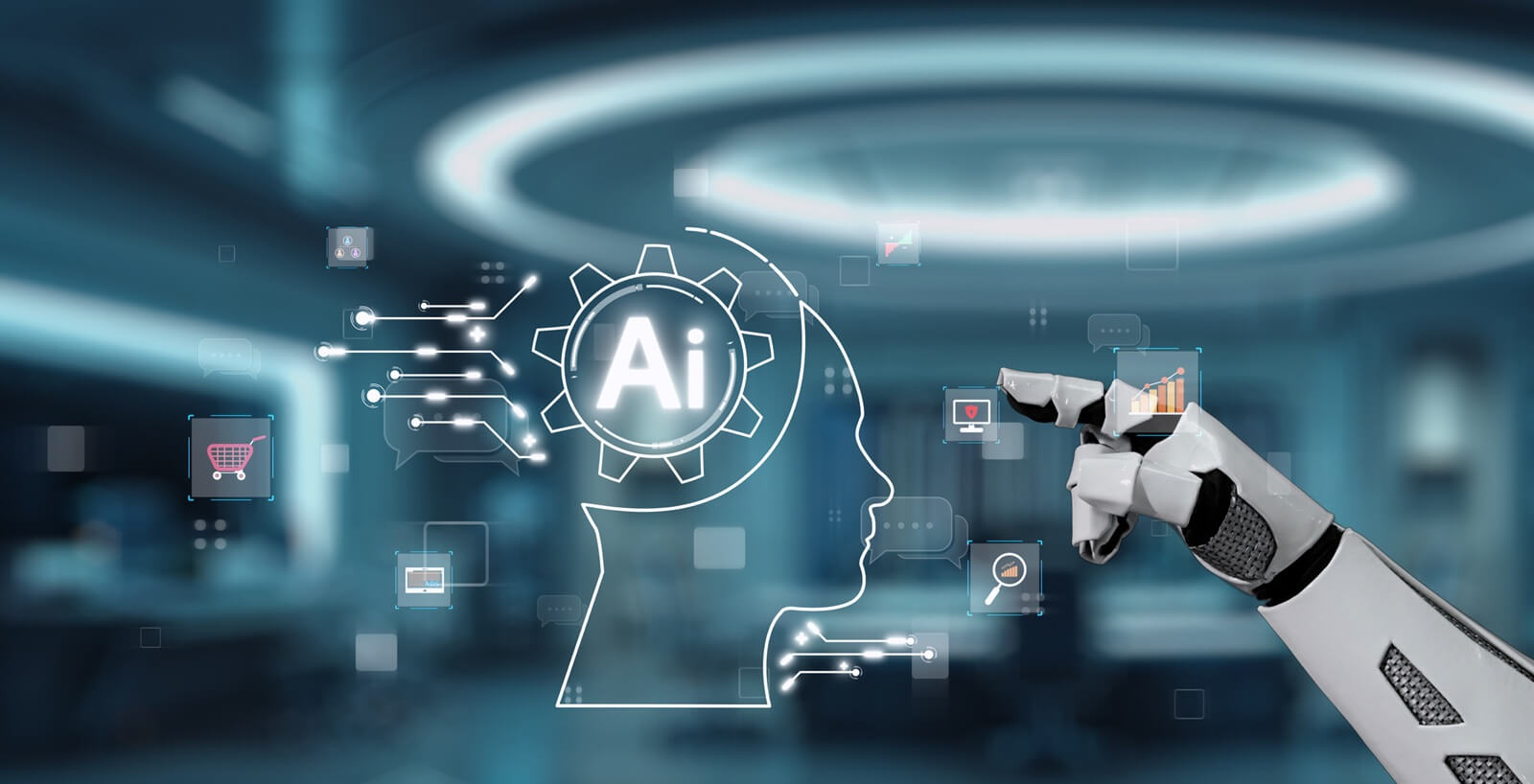Engineering has always been a discipline built on precision, planning, and progress. Yet in today’s rapidly evolving digital ecosystem, progress depends on one more essential pillar — adaptability. The firms that will define the next decade aren’t those relying solely on technical mastery; they’re the ones leveraging AI infrastructure engineering to scale intelligently, automate operations, and stay perpetually ahead of the curve.
Artificial intelligence is no longer an emerging advantage for engineering firms — it’s a strategic necessity. From predictive project analytics to automated design optimization, AI-driven systems are redefining how firms deliver, collaborate, and compete. But while AI capabilities continue to expand, the real challenge lies in the infrastructure that supports them. Without scalable, intelligent hosting environments capable of handling large datasets and computational workloads, even the most advanced AI tools become bottlenecked.
That’s where Stealth Technology Group steps in — empowering engineering firms to transition from static, siloed systems to modular, cloud-based AI infrastructures that grow with the business. This transformation isn’t just about technology; it’s about ensuring future readiness — a foundation where innovation, performance, and reliability coexist seamlessly.

1. The Shifting Landscape of Engineering Operations
Engineering firms today are navigating unprecedented levels of complexity. Projects are larger, data is richer, and clients expect more accuracy in less time. This has given rise to a data-intensive workflow where every process — from simulation and modeling to compliance and reporting — depends on computational power and cross-platform collaboration.
Traditional IT systems, designed for static workloads, can no longer keep pace with fluctuating demands. Peak project cycles often overwhelm infrastructure, while idle periods waste costly resources. This inefficiency not only affects profitability but also innovation, as engineers spend more time managing systems than solving problems.
AI infrastructure engineering changes that equation. By leveraging intelligent automation and cloud elasticity, firms can dynamically scale computing resources based on real-time demand. Whether running large-scale simulations, hosting collaborative BIM environments, or processing terabytes of project data, AI-enabled infrastructure ensures consistent performance without overspending on hardware.
2. From Static Systems to Smart Infrastructure
The transition from traditional hosting to scalable AI hosting marks a paradigm shift in how engineering firms operate. Instead of reacting to system limitations, firms gain proactive, predictive infrastructure that anticipates workloads and optimizes resources autonomously.
Stealth’s modular architecture integrates machine learning-driven resource allocation that continuously monitors system health, user activity, and project intensity. If a firm begins a large infrastructure project requiring heavy computational modeling, the AI automatically expands available processing capacity, then scales down once the task is complete.
This not only improves cost efficiency but also enhances stability — eliminating downtime that often plagues legacy systems. AI-based workload balancing ensures that every team, regardless of geography, has the same performance experience, enabling seamless collaboration across departments and locations.
In essence, smart infrastructure turns IT from a fixed expense into a living, adaptive asset — one that evolves as fast as your firm does.
3. Why Scalability Defines the Future of Engineering
Scalability is more than a buzzword; it’s the bedrock of future-ready engineering. As projects evolve from 2D planning to AI-driven 4D and 5D modeling, the data footprint grows exponentially. Firms that cannot expand computational and storage capacity instantly will lose valuable time — and clients.
Scalable AI hosting ensures that whether an engineering team is managing a single project or an international portfolio, performance never suffers. With Stealth’s modular infrastructure, firms gain an architecture designed for continuous evolution. Each module — from compute clusters to AI analytics nodes — integrates seamlessly with existing tools and software environments, including CAD, BIM, and digital twin ecosystems.
This flexibility allows engineers to focus on design excellence rather than infrastructure management. The result is a more agile organization capable of handling tomorrow’s challenges with today’s resources.
4. How AI Infrastructure Engineering Drives Operational Efficiency
AI infrastructure doesn’t just support operations — it transforms them. Through automation, predictive analytics, and intelligent monitoring, engineering firms achieve measurable gains in productivity, security, and uptime.
Core Benefits Include:
- Predictive Maintenance: AI identifies potential system failures before they disrupt workflows, ensuring uninterrupted operations.
- Automated Optimization: Algorithms allocate resources based on project complexity and user behavior, reducing energy waste and idle capacity.
- Performance Insights: Real-time dashboards allow IT and engineering leaders to visualize system loads, bottlenecks, and performance metrics instantly.
Stealth’s AI infrastructure engineering framework merges automation with transparency. Every process, from rendering 3D models to managing project databases, is logged, analyzed, and refined through AI feedback loops. This creates a self-healing ecosystem where downtime is minimized, and decision-making is data-driven.

5. Cybersecurity and Compliance in the Age of Intelligent Infrastructure
As infrastructure grows more connected, so too does its exposure to cyber threats. Engineering firms handling sensitive project data — from blueprints to geospatial datasets — are increasingly targeted by ransomware and espionage-driven attacks.
Stealth’s AI infrastructure integrates adaptive cybersecurity protocols that monitor and neutralize threats in real time. Machine learning algorithms detect anomalies in traffic behavior, flagging suspicious activity before breaches occur. Additionally, built-in compliance modules ensure that all hosted data aligns with SOC 2 Type II, ISO 27001, and GDPR standards.
By embedding compliance directly into the infrastructure, Stealth eliminates the need for manual audits or third-party validation. This not only enhances trust but also frees firms to focus on innovation rather than regulation.
6. Integrating AI With Core Engineering Tools
For engineers, the success of AI infrastructure lies in seamless integration with existing software ecosystems. Stealth’s platform connects effortlessly with tools like AutoCAD, Revit, Trimble, and simulation engines, providing unified access through a single, secure cloud environment.
AI-driven integration allows design and analysis processes to interact fluidly. For example, results from a finite element analysis can automatically inform design modifications in real time, reducing iteration cycles and human error. This bidirectional data flow ensures that every stakeholder works from the same updated model, enhancing accuracy and project coherence.
With Stealth’s infrastructure, firms eliminate the friction between design, simulation, and validation — replacing disconnected workflows with synchronized intelligence.
7. Quantifying the ROI of AI Infrastructure
Adopting scalable AI hosting is an investment that delivers both short-term efficiency and long-term financial gain. Engineering firms report:
- Up to 45% reduction in downtime, thanks to predictive performance optimization.
- 30–40% faster project delivery, as AI automation reduces processing and coordination delays.
- 20% lower IT costs, due to smart scaling and reduced hardware dependency.
These metrics demonstrate how AI infrastructure engineering is not just a technical upgrade but a strategic growth accelerator. By replacing reactive maintenance with predictive efficiency, Stealth’s clients transform technology from a cost center into a profit-driving capability.
8. Future-Proofing: Designing for Tomorrow’s Engineering Challenges
The future of engineering lies in complexity — larger data sets, higher performance requirements, and greater collaboration across borders. Firms that treat infrastructure as an afterthought will struggle to adapt, while those investing in future-ready architectures will lead the transformation.
Stealth’s approach ensures that infrastructure is not static but evolutionary. Through continuous updates, machine learning-driven optimization, and modular scalability, Stealth’s platform adapts automatically to new software standards, data models, and regulatory landscapes.
This foresight means firms can embrace innovation — from digital twins to generative design — without fearing obsolescence. With every project, the system learns, evolves, and refines itself, aligning perfectly with the long-term goals of sustainability and growth.

Summary
Engineering is evolving — from manual precision to digital intelligence, from reactive workflows to predictive ecosystems. The firms that will thrive in this new era are those that see technology not as a support system, but as a foundation for strategy, agility, and excellence.
Stealth Technology Group empowers engineering firms to achieve that evolution through its AI infrastructure engineering solutions. With modular, cloud-based hosting and predictive analytics, Stealth transforms infrastructure into an intelligent engine for growth — one that scales, learns, and protects. By integrating automation, compliance, and machine learning, firms gain the power to design, simulate, and deliver without limits.
If your firm is ready to build a future-proof foundation, Stealth can help you assess your workflows, deploy scalable AI hosting, and train your teams to operate with precision and confidence. The result is not just better infrastructure — it’s better engineering.
📞 Call (617) 903-5559 or contact us to discuss how Stealth’s intelligent cloud infrastructure can transform your firm’s performance, scalability, and competitiveness.



